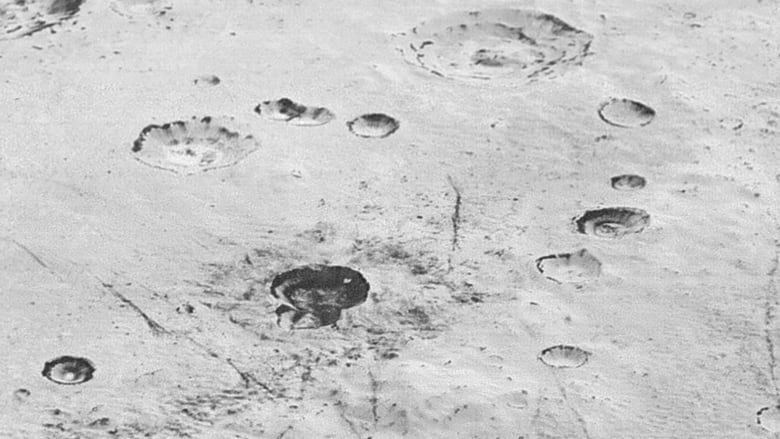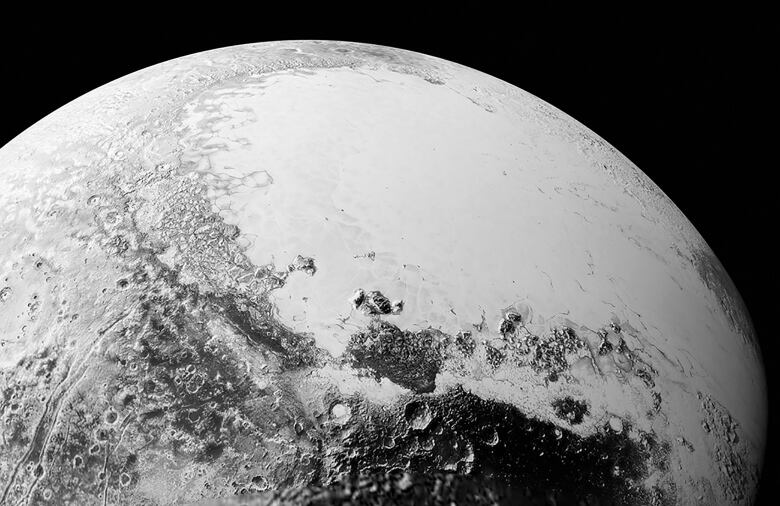Pluto's craters, glaciers and mountains on display in new NASA images
Images taken as spacecraft made its closest approach to the dwarf planet in July

NASA has released the sharpest images yet of the dwarf planet Pluto, taken from its New Horizons spacecraft during its now-famous flyby on July 14.
- Why NASA couldn't just use Hubble telescope to see Pluto
- Pluto moon Kerberos captured by New Horizons
- NASA's New Horizons probe rewrites the book on Pluto
The new, super high-resolution images show craters, glacial terrain and mountainous parts of the previously mysterious Pluto.

The photos are part of a series of images ofa strip 80 kilometres wide, starting at Pluto's horizon from the vantage point of the spacecraftand stretching 800 kilometres northwest of the informally named Sputnik Planum,a largeicy plain.
NASA took the images with its telescopic Long Range Reconnaissance Imager (LORRI), over a timespan of about one minute.

The space agency says the pictures have"resolutions of about 250-280 feet (77-85 metres) per pixel,"meaning the features the images reveal are smaller than half a city block,the agency explained.
These are the latest in a series of stunning images the space agency has releasedsince the summer flyby. Previousimages have shown frozen water, massive canyons, ice peaks and even aclose-upofone of Pluto's moons,Kerberos.
The findings have shown that the dwarf planet is not the dead, frozen ice ball it was thought to be many of the recent findings have suggested that it has a geologically active interior.












_(720p).jpg)


 OFFICIAL HD MUSIC VIDEO.jpg)
.jpg)



























































































